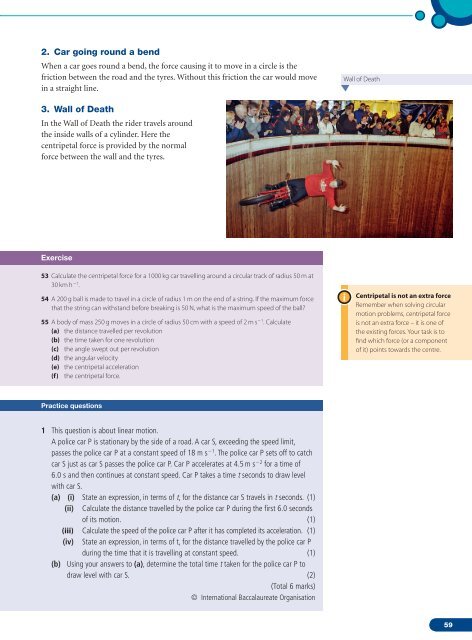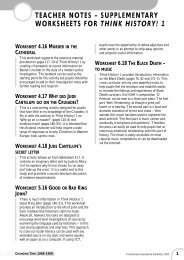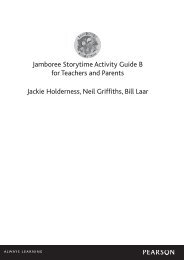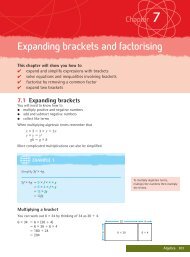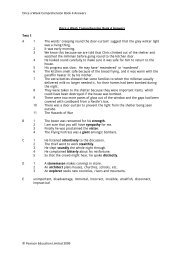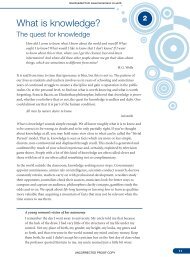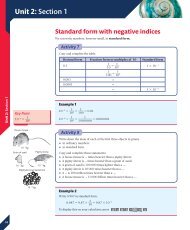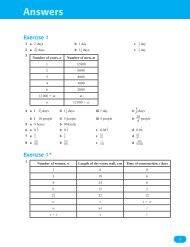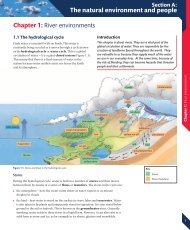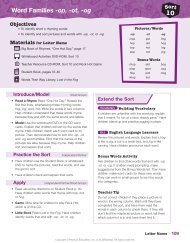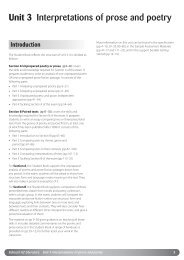2 Mechanics - Pearson Global Schools
2 Mechanics - Pearson Global Schools
2 Mechanics - Pearson Global Schools
- No tags were found...
Create successful ePaper yourself
Turn your PDF publications into a flip-book with our unique Google optimized e-Paper software.
2. Car going round a bendWhen a car goes round a bend, the force causing it to move in a circle is thefriction between the road and the tyres. Without this friction the car would movein a straight line.Wall of Death3. Wall of DeathIn the Wall of Death the rider travels aroundthe inside walls of a cylinder. Here thecentripetal force is provided by the normalforce between the wall and the tyres.Exercise53 Calculate the centripetal force for a 1000 kg car travelling around a circular track of radius 50 m at30 km h 1 .54 A 200 g ball is made to travel in a circle of radius 1 m on the end of a string. If the maximum forcethat the string can withstand before breaking is 50 N, what is the maximum speed of the ball?55 A body of mass 250 g moves in a circle of radius 50 cm with a speed of 2 m s 1 . Calculate(a) the distance travelled per revolution(b) the time taken for one revolution(c) the angle swept out per revolution(d) the angular velocity(e) the centripetal acceleration(f) the centripetal force.Centripetal is not an extra forceRemember when solving circularmotion problems, centripetal forceis not an extra force – it is one ofthe existing forces. Your task is tofind which force (or a componentof it) points towards the centre.Practice questions1 This question is about linear motion.A police car P is stationary by the side of a road. A car S, exceeding the speed limit,passes the police car P at a constant speed of 18 m s 1 . The police car P sets off to catchcar S just as car S passes the police car P. Car P accelerates at 4.5 m s 2 for a time of6.0 s and then continues at constant speed. Car P takes a time t seconds to draw levelwith car S.(a) (i) State an expression, in terms of t, for the distance car S travels in t seconds. (1)(ii) Calculate the distance travelled by the police car P during the fi rst 6.0 secondsof its motion. (1)(iii) Calculate the speed of the police car P after it has completed its acceleration. (1)(iv) State an expression, in terms of t, for the distance travelled by the police car Pduring the time that it is travelling at constant speed. (1)(b) Using your answers to (a), determine the total time taken for the police car P todraw level with car S. (2)(Total 6 marks)© International Baccalaureate Organisation59


